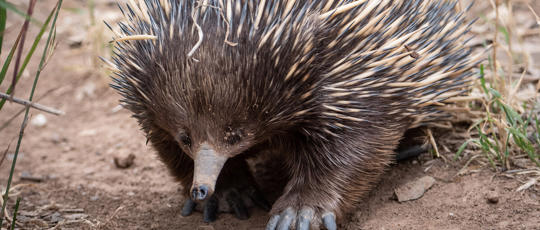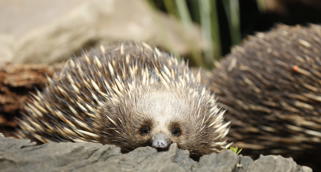Short-beaked Echidna
Also known as spiny anteaters, echidnas are found all around Australia, as well as Papua New Guinea and Indonesia.
Echidnas are known for their distinctive and endearing rolling gait. They eat ants, termites, grubs and worms and use their forepaws and fast-moving tongues to dig into ant nests.

Echidnas grow to 30-40cm long, and can weigh up 2-5kg. Their bodies are covered with spines that are about 5cm long.
Echidnas can live in most habitats, including bush, savannah, arid and semi-arid areas, and rainforests. Females lay one egg, which stays in the mother’s pouch and hatches after 10 days.
The baby echidna (puggle) stays in the pouch for about two to three months, until it’s pushed out because of its growing spines. The mother then leaves the baby in a burrow, returning to feed it every four to six days.
Although they’re not endangered, individual echidnas are at risk from dog attacks, natural disasters and motor vehicles. Echidnas are among the more than 2,000 sick and injured native animals treated each year at the Sanctuary’s Australian Wildlife Health Centre.
In parts of Papua New Guinea, echidnas are hunted for food. Closer to home, local predators include dogs, eagles and Tasmanian Devils.
Echidnas move slowly, which means they’re at risk on our roads. If you find an injured echidna, you can assist by contacting a local wildlife help group. Note the location in case a baby is nearby.
Facts about echidnas
- The echidna and the platypus are the only mammals that lay eggs.
- Echidnas don't have teeth.
- A group of echidnas are called a parade, herd or flock.

